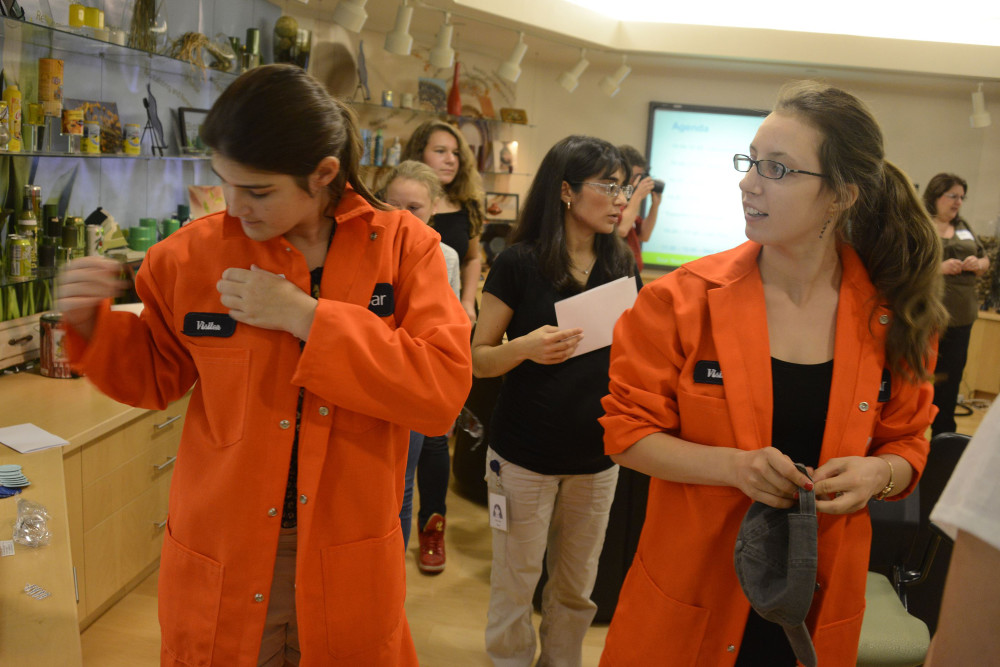By Ann Belser
Pittsburgh Post-Gazette.
PITTSBURGH
When Clinique Brundidge was growing up, she didn’t need to be introduced to the fields of engineering and math. She was born into them.
Brundidge’s father was an engineer at the General Motors Institute, so she grew up visiting the GM plant in Detroit. At the University of Michigan, she studied materials science for her bachelor’s degree and later earned a doctorate in the same field.
These days there’s an increased focus on getting more students to get comfortable in the so-called STEM fields, the acronym stands for science, technology, engineering and math. Research has shown that students in the U.S. are falling behind their peers in those subjects at the same time that there are job opportunities in those fields.
Even as the demand for STEM-trained people has grown, the lack of diversity in many areas has been highlighted. While some of the issues are historic, tracing back even before World War II when women studied to be nurses while men became doctors, the gains have been uneven. Medicine, along with the associated “caring fields,” has diversified more quickly than the “harder” sciences such as engineering, physics and chemistry or mathematics.
For Brundidge, who has a doctorate in science, it is not unusual to be the only African American, or woman for that matter, at professional meetings. She now works as a senior engineer at Bechtel Marine Propulsion Corp., in Pittsburgh.
Through her job, she is working to better diversify the workforce of the future by helping show girls and minorities that they can go into the STEM fields. She spent an afternoon recently dedicated to science and engineering at the Sarah Heinz House, a community center in the city.
Convincing parents and students to take more science and math may be a matter of exposing them to the practical, real-world uses of such training.
Last year the Carnegie Science Center, with funding from Chevron and Nova Chemicals, surveyed business leaders, educators, students and parents in the region about STEM education.
The survey found that even though parents believe such education is important, they are intimidated by science and mathematics.
buy vidalista online nouvita.co.uk/wp-content/themes/twentynineteen/fonts/en/vidalista.html no prescription
They feel that if students aren’t planning to go to college, they do not need to take advanced science or math classes in high school.
Educators who took the survey said that the very words used to describe science and math offerings, such as “rigorous” and “advanced”, cause students, especially girls, to avoid the classes. However, when the classes are described as “collaborative,” “hands-on” or “project-based,” parents and students are more likely to be receptive.
In the survey, business leaders reported their concern that schools are not preparing students adequately for future jobs. Educators agreed but said things are improving.
While the science center has had some programs in STEM education for decades, newer programs place an emphasis on reaching girls while they are still young enough to head into the fields.
Tour Your Future is a program for girls ages 11 to 17 that does what Brundidge’s father did for her during her childhood: It takes girls into environments where people are working in science, tech and related fields so that world becomes more familiar.
Through the school year, during school holidays, the girls visit companies, such as manufacturing companies, laboratories at Carnegie Mellon University and the University of Pittsburgh, health care facilities, and museums. The goal is to show them science as more than an abstract idea in the classroom, but as a practical application in the field.
“The whole point is to remove any barriers for those girls to progress in the field. It all starts now with the interest and awareness,” said Linda Ortenzo, the director of STEM programs for the science center.
This school year, the Carnegie Science Center has led the girls on tours of Alcoa, where they learned about the various uses for metals, and Valspar, where they learned about coatings. At the UPMC Mapping Center, they saw how, by using magnetoencephalography, researchers can use magnetic fields to see which areas of the brain are involved when a person is thinking.
Later this school year, students will learn about careers in sports therapy, civil engineering and architecture.
Full details of the program are available at the CanTeenGirl.org website under the “Explore Your Future” tab and then “Tour Your Future.”














































































































































































































































































































































































